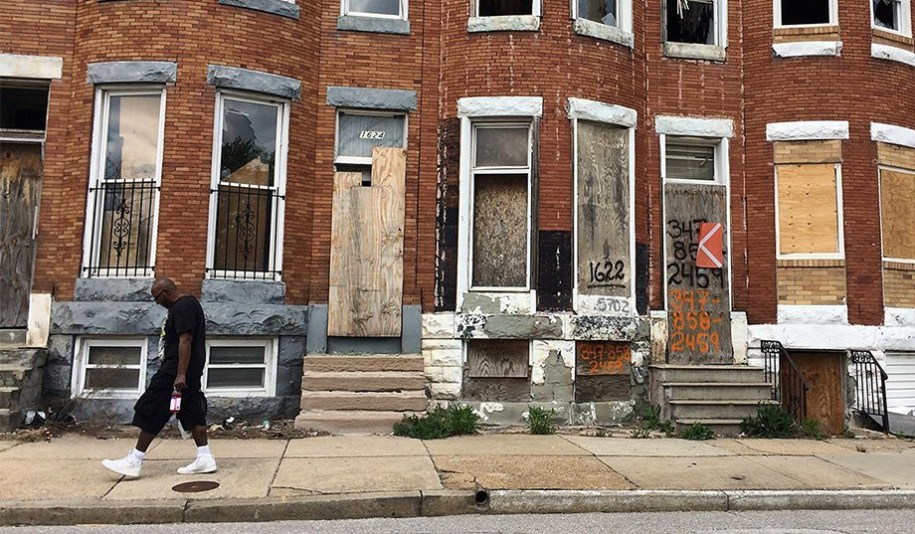
- Charter Schools /
- Criminal Justice /
- Economic & Fiscal Policy /
- Education /
- Property Taxes /
- Taxes /
- Transportation /
- Welfare
Baltimore’s real “systemic” problem
Writing in The Sun, Baltimorean D. Watkins has done his hometown a fine service by pointing out some uncomfortable facts. First and foremost: merely proclaiming our love for Baltimore – and disaffection for those who criticize it, like our Tweeter-in-Chief – isn’t enough. We’ve got to get to work fixing it.
The fix will involve many structural changes, from policy to personnel, as Mr. Watkins notes. In one crucial respect, though, his diagnosis is incomplete.
When he describes several talented young African-American artists who couldn’t find work here but were snapped up by employers elsewhere, he implies that racism explains the lion’s share of the city’s problems and is the main factor that dooms many of its residents to poverty. This reflects the dominant narrative in academic circles and media: “systemic” racism is the all-powerful force that must be conquered if cities like Baltimore – and, indeed, America – are to flourish.
This narrative is unintentionally disrespectful to those heroes of the civil rights movement who sacrificed enormously – and sometimes gave their lives – to change “the system” so that racial bias would have no place in law or policy. And the oft-heard refrain that “nothing has changed” can be damaging to young people because it invites hopelessness and discourages investment in skills that, thanks to those heroes, now can lead to prosperous, fulfilling careers.
Most importantly, though, focusing on the usual suspects blinds us to other possibilities, some of which may actually be easier to remedy.
So as Mr. Watkins described friends who had to go elsewhere to seek opportunity, I found myself thinking of my students. Over 38 years of college teaching in Baltimore, I’ve known hundreds of bright, hard-working graduates in business, economics, and other fields; since my former institution is Catholic, private, and expensive, its demographic skews white. But while some of those students have prospered here, a very large proportion over the years – white, black, Hispanic, and Asian – have found that their talents are in greater demand elsewhere, just like Mr. Watkins’s.
The simple fact is that it’s much easier to prosper in a growing economy than a declining one, and Baltimore’s economy has been shrinking for decades. When Freddie Gray was born in 1990, the city was home to 445,331 jobs. By the time of his tragic death in 2015, the city had lost an astounding 25% of its job base, retaining just 334,065 jobs.
One can argue that the perpetrator here is systemic racism. But that ignores Baltimore’s progressive political culture and insults its leaders – since 1987, six of its seven mayors have been African-American – and its citizens by denying that any progress has been made on this front. No, racism has not been conquered, but “the system” has been much improved in recent decades. Our economy, however, definitely has not.
But this is actually a hopeful message, because a diagnosis of what ails Baltimore’s economic system is straightforward and a fix is attainable.
A vibrant economy requires a healthy partnership of capital and labor – the structures, machines, and workers needed to produce, sell, and build wealth. Sadly, Baltimore has repelled a great deal of capital investment over the last six decades by taxing it at non-competitive rates: our tax on residential and business property is more than twice that in surrounding jurisdictions.
This investment repellent and the resulting flight of capital impoverishes labor and is responsible for much of our devastating decline. Opinion leaders regularly speak of the city’s “disinvestment” problem, decry “food deserts,” and call for transit links to jobs in the suburbs. Policy makers, in tacit recognition of our non-competitive investment climate, sometimes bestow special tax breaks on politically connected, large-scale developers.
But this is not enough, and it is not fair. A necessary – though not sufficient – condition for opportunity and prosperity to spread throughout Baltimore is that it must make economic sense for everyone, from humble homeowners to corner store owners to corporate bigwigs, to invest here at a competitive rate.
In Maryland Public Policy Institute's Maryland Journal and more recently in The Journal of Applied Corporate Finance, we have laid out a plan by which this can be achieved without doing violence to the city’s budgets. This will involve a property tax rate cap in Baltimore City, along the lines of those which have generated revivals in many other cities – and, closer to home, in Maryland’s Prince George's County.
In sum, addressing the “root causes” of the city’s problems with crime, poverty, abandonment of property, and much more starts with creating a healthy investment environment. Given the city’s precarious condition and its escalating homicide rate, it is probably no exaggeration to say this is do or die.
Stephen J.K. Walters is the author of Boom Towns: Restoring the Urban American Dream and Chief Economist at the Maryland Public Policy Institute. Email him at swalters@loyola.edu.





